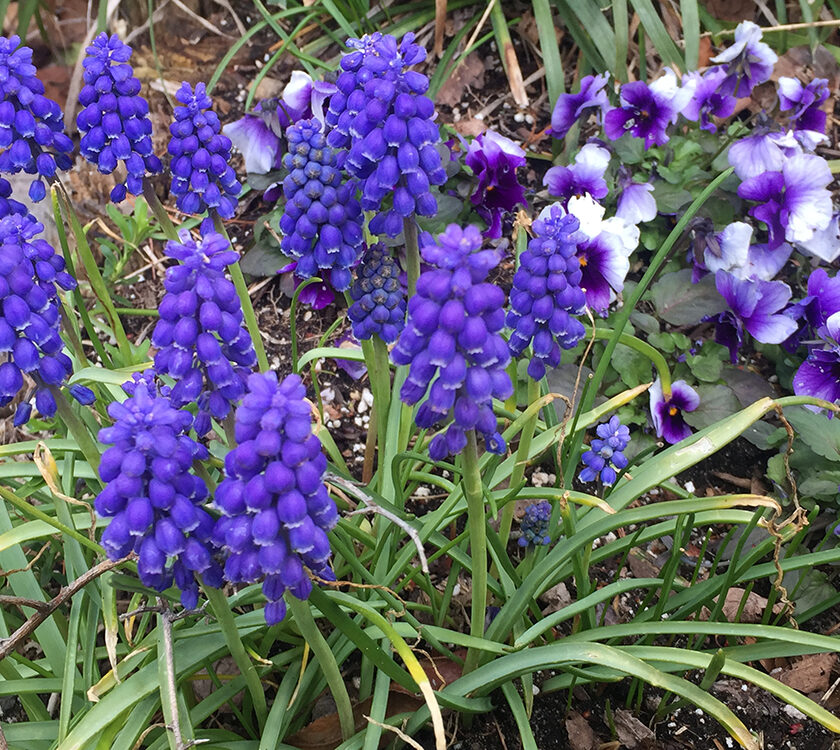Let It Grow
By Tammy Thornton
Now that the weather has become colder, gardeners have an exciting task ahead. It’s time to plant your garden of the future with spring bulbs. From daffodils and tulips to fritillaries and alliums, creating a garden with bulbs offers endless combinations for a spring display.
When planting spring bulbs in fall, you’ll feel like you are burying hidden treasure in the garden. Your loot will remain a secret throughout fall and winter, almost forgotten. Then, just as we need the hope of spring, the tiny green stems will poke their way through the soil, emerging with buds full of anticipation. Once you see these beautiful flowers blooming, you will wish you planted even more bulbs.
At one time, tulip bulbs really were equal to a chest of gold. During the Dutch Golden Age, tulip enthusiasts turned trading tulip bulbs into a frenzy. In what is considered to be one of the first speculative financial bubbles, the craze later became known as “Tulip Mania”. Prices for tulips greatly accelerated in 1634 before collapsing in 1637. These coveted bulbs were traded as “futures”, and those holding the bag in the end faced financial ruin. Interestingly, some of the most sought-after tulips of this time were infected with a virus that gave the flowers their unique striped patterns. Though buyers and sellers did not realize this at the time, the beautiful streaking and coloration was a result of the tulip mosaic virus (also known as tulip breaking virus, or TBV). “Tulipomania” by author Mike Dash, is a good read about the history of the tulip.

Fortunately, you don’t need to mortgage your house to buy bulbs in our century. Buying in bulk is the best way to save, and planting en masse will make a stunning impact when blocks of color are blooming. Order from local garden nurseries or from the catalogs of reputable flower farms. If buying in person, examine the bulbs to make sure they look and feel healthy. They should be full, firm, and devoid of mold like a good head of garlic.
Once you start planting spring bulbs, you will realize that you aren’t alone in your love for tulips and crocuses. Squirrels are like the sneaky pirates waiting to pillage and plunder your garden. Much of the advice found on the internet has proved futile for protecting my bulbs from these marauders. In my garden, I have found protecting my bulbs with chicken wire has worked best. Deeply plant your bulbs in groups of at least five bulbs, then cover the soil with a rectangle of chicken wire that you have cut to fit over the hole. Secure the chicken wire with landscaping pins or a large rock or bricks. Remove the chicken wire before spring. I usually remove the chicken wire once the ground has become hard and frozen.
You can also choose spring bulbs that critters don’t find tasty. You would never guess from their unique beauty that alliums are in the garlic family. Every spring I wish I had planted more of these interesting flowers. But rub part of the seed head between your fingers and you’ll be convinced from the smell that squirrels and other critters will leave them alone. Daffodils, hyacinths, grape hyacinths, Spanish bluebells, squill, snow drops, and winter aconite are among the other spring bulbs that should be safe from attack. Many of these same flowers will be distasteful to deer. If you have set your heart on planting tulips, interplant the tulip bulbs with some of the plants listed above. They may serve as guardians of your tulips.
Growing spring flowers from bulbs is quite easy. Start with healthy bulbs and you should be successful. But planting your spring garden in fall is a lesson in patience. Though the wait is long, the reward is worth the time. In order to break dormancy, your bulbs need this time of being subjected to the cold before the refreshing warmth of spring. (Remember that when you are shoveling snow this winter.) I think the lesson of spring bulbs buried in the ground is worth pondering for ourselves. Unless they endure the long winter, they will not thrive in the spring. Don’t lose hope. Remember, treasure awaits you.
Tammy Thornton lives with her husband, children, and crazy pets while enjoying a life of gardening, cooking, and going to the beach.









